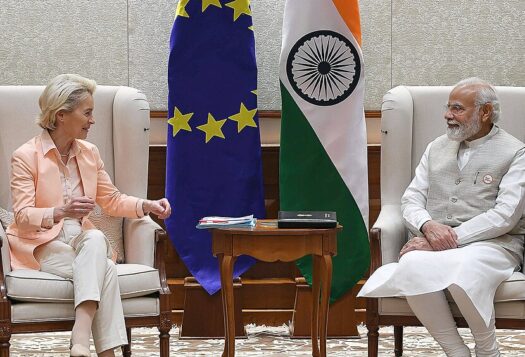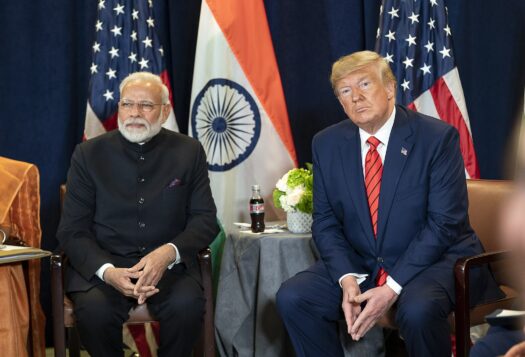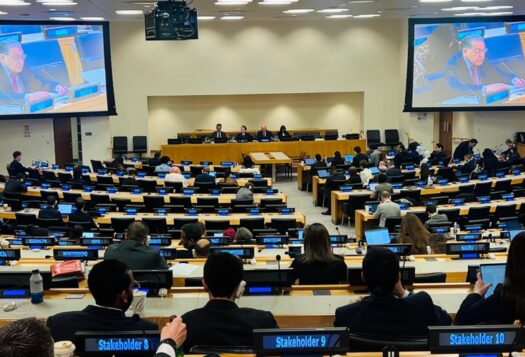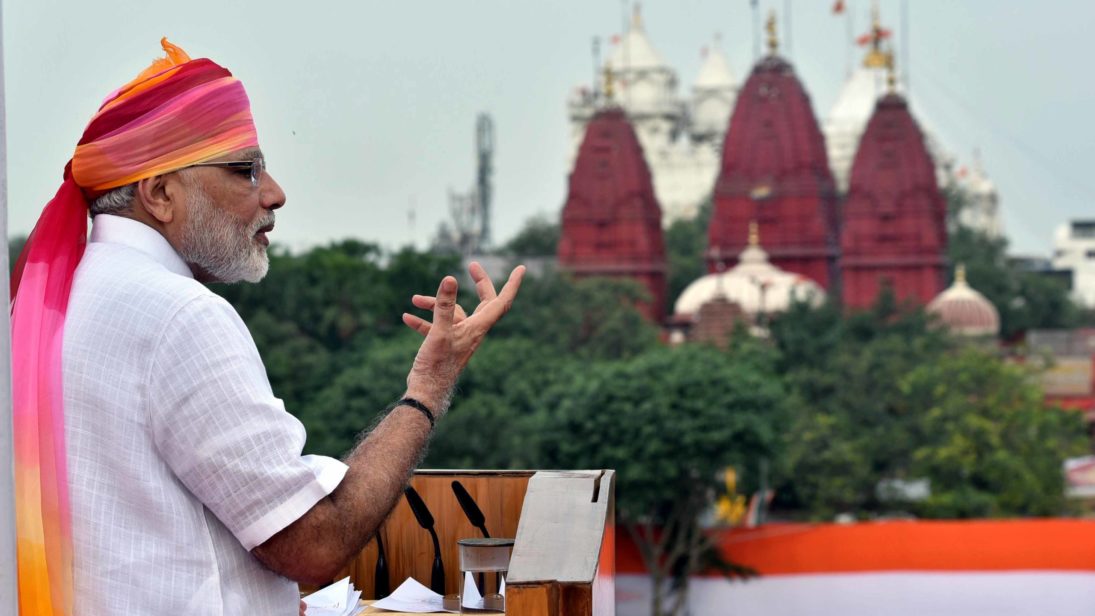
Indian Prime Minister Narendra Modi seemed to go the extra mile to indicate his government would reset India’s relations with countries after he was first elected to office in 2014. He generated a lot of optimism when he invited neighboring heads of state to attend his swearing-in ceremony and spent the first few years talking about his vision for South Asia.
In a speech at the SAARC Summit in Nepal in November 2014, he acknowledged that “nowhere in the world are collective efforts more urgent than in South Asia; and, nowhere else is it so modest.” Recognizing that all countries in the region face a common challenge, namely “a long climb to the summit of development,” he called for transforming a “South Asia of flowering hope into a rich field of peace and prosperity.” However, nearly six years on, there are few signs of any fundamental shift in India’s regional foreign policy. Not only did Prime Minister Modi’s government make little progress towards its Neighborhood First goals during its first term, but its objectives for South Asia in its second term are also far from clear.
Modi’s Vision for South Asia
Early in his first term, Modi explained that his vision for South Asia was the same as his vision for India—Sabka Saath, Sabka Vikaas—i.e., South Asian countries could develop together, hand-in-hand and in partnership with each other. In an address before the Sri Lankan Parliament in March 2015, he stated, “my vision of an ideal neighborhood is one in which trade, investments, technology, ideas and people flow easily across borders; when partnerships are formed with the ease of routine.” During a visit by the President of Maldives to New Delhi in April 2016, Modi reiterated this message: “India’s economic development is incomplete without the advancement of its neighboring countries. ‘Neighbors First’ is not only our strategy but also a central element of our philosophy.” However, he did not present any major policy initiatives to help promote regional integration or development.
Not only did Prime Minister Modi’s government make little progress towards its Neighborhood First goals during its first term, but its objectives for South Asia in its second term are also far from clear.
The specific policy measures that Modi has articulated have been modest, and his government’s success in achieving these has been mixed. For example, proposed at the 18th SAARC summit in 2014, a satellite for South Asia funded by India was successfully launched in May 2017. After announcing its intention to extend India’s National Knowledge Network to all South Asian countries in 2015, the government finally began the formal process of doing so in January 2018. So far, the Knowledge Network has only been extended to Bangladesh and Bhutan. India also delivered on its promise to meet the USD $1.05 million funding shortfall to establish the SAARC Regional Supranational Reference Laboratory for HIV/AIDS and TB in Kathmandu. While these efforts in the health and information sectors can help generate goodwill, they do not provide the impetus required to fundamentally re-orient India’s regional approach toward building meaningful cooperation.
Indeed, there has been little progress in developing a robust multilateral forum for pursuing regional cooperation. India boycotted the 19th SAARC Summit that was to be held in Islamabad in 2016 blaming Pakistan for its policy of obstruction and citing its the continued state sponsorship of cross-border terrorism. Modi’s government said it would pursue multilateral engagement through BIMSTEC instead, which comprises five South Asian states (Bangladesh, Bhutan, India, Nepal and Sri Lanka) and two South East Asian states (Myanmar and Thailand). This was a promising proposal; SAARC has been held hostage by the endless hostilities between India and Pakistan. However, the last BIMSTEC Summit was held in Kathmandu in August 2018 and the next one is expected to be held in Colombo in 2022.
Meanwhile, few steps have been taken to deepen regional economic ties. Modi announced intentions to increase intra-regional trade and investments, and decrease India’s huge trade surplus against its neighbors. However, data from the Ministry of Commerce indicates that India’s trade with South Asia in 2019 was up by only about 1 percent compared to 2014. Similarly, India’s trade surplus with the region in 2019 registered a decrease of merely 6 percent from 2014 levels.
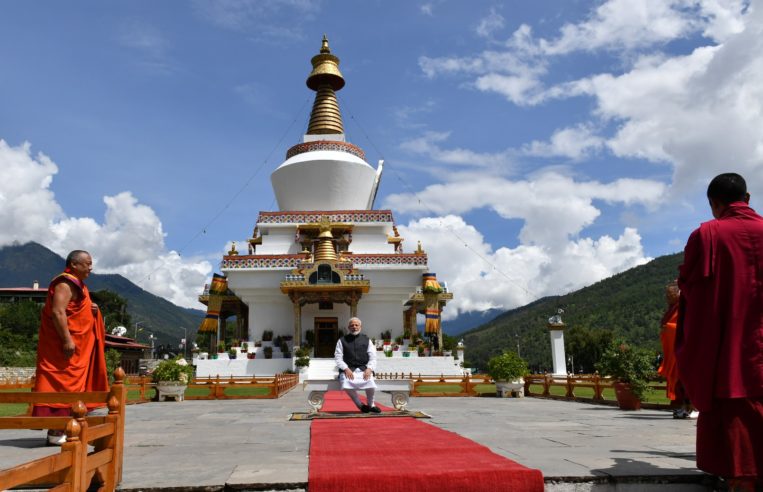
Undermined by a Divisive Domestic Agenda
In sharp contrast to the optimistic start to his first term in office, Modi’s second term has set a more divisive tone. Early policy decisions to change the constitutional status of Jammu & Kashmir and introduce the Citizenship Amendment Bill of 2019 have not only been controversial at home but have also been met with criticism abroad. Worse, these policies have only worsened suspicion and concern among India’s neighbors.
India has long treated South Asia as a constraint on its ambitions and dismissed its concerns. Six years on, there is little evidence to suggest that its foreign policy establishment has changed how it views the region. In public diplomacy lectures across the country, Indian diplomats continue to blame vested interests in neighboring countries for promoting erroneous narratives of India as a big bully.
India has long treated South Asia as a constraint on its ambitions and dismissed its concerns. Six years on, there is little evidence to suggest that its foreign policy establishment has changed how it views the region.
Modi’s government has done little to depart from the routinized neglect of South Asia in New Delhi or address the trust deficit in the region vis-à-vis India. Instead, the discourse of danger that has been crafted by the government over the past year concerning illegal migration from the region and the threat of terrorism risks further alienating its neighbors. For example, vitriolic comments by Home Minister Amit Shah likening illegal migrants from Bangladesh to “termites” will make it much harder to pursue the bilateral cooperation required for managing this problem humanely is essential.
Indeed, this imprudent prioritization of the ruling Bharatiya Janata Party’s narrow ideological agenda over the country’s national interests will constrain New Delhi’s ability to develop productive relations with its neighbors. More broadly, squandering the country’s soft power founded on the vision of India as a multi-ethnic, multi-lingual, and multi-religious society will diminish India’s claims of being a moral actor.
More recently as the COVID-19 pandemic worsens in South Asia, Modi has proposed setting up a SAARC fund and announced an initial contribution of USD $10 million, which amounts to a paltry $0.005 for each individual in South Asia. Moreover, current efforts at coordinating a regional mitigation strategy remain limited to sharing medical supplies and expertise.
The impending economic crisis as a consequence of the global pandemic will hit the region hard. Narendra Modi’s government has only continued India’s failure to provide strong regional leadership. Weak institutional ties and deep mistrust will not only impede robust cooperation among South Asian countries but could also compound human suffering should the crisis worsen in the region.
Editor’s Note: A version of this piece originally appeared on 9DashLine and has been republished with permission from the editors.
***
